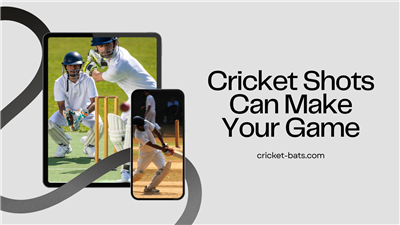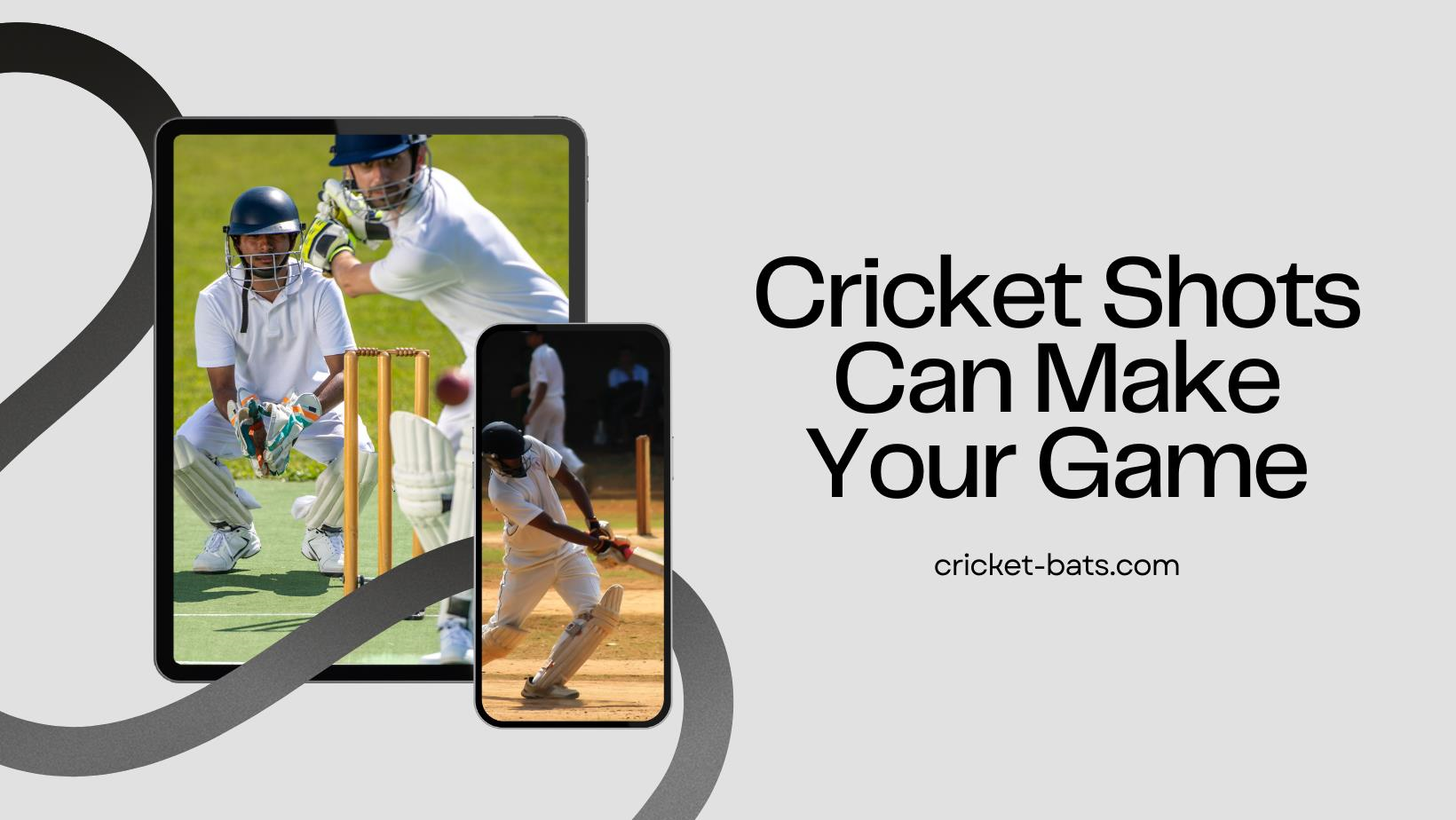Cricket Shots Can Make Your Game
Published: Monday, March 18, 2024
Each cricket shot has a specific reason, carefully designed to deal with different challenges from bowlers and the condition of the pitch.

Cricket is a game known for its skill and tactics. In cricket, players use a variety of shots to deal with different challenges from bowlers and the pitch. Let's explore some of these shots and how they work as explained by JA Myburgh, Owner of Cricket-Bats.com
The Helicopter Shot: This shot, immortalized by cricketing legends like Sky and MS Dhoni, involves a powerful flick of the wrists while rotating the body. Typically reserved for fuller-length deliveries, it results in a flat, powerful shot towards the leg side.
Reverse Sweep: A more advanced version of the traditional sweep shot, the reverse sweep sees the batsman switch their grip on the bat to play the ball from an off-stump line towards the offside, adding a touch of unpredictability to their stroke play.
Sweep Shot: Predominantly used against spinners, the sweep shot requires the batsman to kneel or crouch while playing the ball from outside off-stump towards the leg side, often used to rotate the strike or find the boundary.
Leg Glance: A delicate and nuanced shot, the leg glance is employed to guide deliveries angling towards the leg side fine towards the leg side, utilizing the pace of the ball to perfection.
Cut Shot: Utilizing the pace of deliveries outside off-stump, the batsman employs the cut shot to guide the ball behind square on the offside with a downward angling of the bat.
Hook Shot: Reserved for deliveries that are higher and further away from the batsman's body, the hook shot involves a horizontal swing of the bat aiming to dispatch the ball towards the square leg or fine leg boundary.
Pull Shot: When faced with short-pitched deliveries targeting the batsman's body, the pull shot comes into play. The batsman transfers their weight onto the back foot, executing a forceful shot towards the leg side.
Defensive Shot: Sometimes, the primary objective isn't scoring runs but defending the wicket. The defensive shot, also known as the dead-bat, is employed by batsmen to block deliveries and ensure the safety of their wicket.
Forward Defensive: This defensive shot sees the batsman moving their front foot forward towards the ball, presenting the full face of the bat to block the ball effectively.
Backfoot Defensive: Similar to the forward defensive but executed with the batsman's weight on the back foot, it's employed to counter short deliveries bouncing awkwardly, ensuring effective defence.
Drive: A hallmark of classical batting, the drive involves the batsman hitting the ball straight down the ground with precision and timing along the pitch.
Cover Drive: A stylish and elegant shot, the cover drive sees the batsman driving the ball through the covers, showcasing a full swing of the bat and impeccable timing.
Square Drive: Similar to the cover drive but aimed at deliveries wider outside off-stump, the square drive involves swinging the bat across the line of the ball to send it square of the wicket on the offside.
Cricket Shots That Determine Your Game
Each cricket shot has a specific reason, carefully designed to deal with different challenges from bowlers and the condition of the pitch. Whether it's a classic drive or a unique move, each shot has its own good and bad points. Let's look at some of the main cricket shots:
The Elegant Drives:
Straight Drive: The straight drive epitomizes control and precision. Executed with a straight bat, the batsman times the ball along the ground through the covers, ensuring consistent runs.
Pros: High control, minimal risk, consistent runs.
Cons: Limited scoring area requires precise timing.
Cover Drive: The cover drive extends the batsman's reach to score in an expansive area. Angled towards the cover region, this shot demands impeccable footwork and balance for its execution.
Pros: Scores in an expansive area, elegant execution.
Cons: Requires good footwork and balance.
Square Drive: A powerful scoring option reserved for deliveries on the off side, the square drive sees the batsman wielding a horizontal bat to aim between point and cover. While offering the potential for big scores, it carries a high risk of mistiming and demands excellent hand-eye coordination.
Pros: Powerful scoring option, good for short balls.
Cons: High risk of mistiming requires excellent hand-eye coordination.
The Deflection Flicks:
Cut: Employing a wrist flick off the off-side, the cut shot directs the ball to the backward point region, offering an efficient way to score off deliveries outside off-stump. However, its effectiveness is limited by the precision required in wristwork and its restricted scoring area.
Pros: Efficient way to score off deliveries outside off-stump.
Cons: Limited scoring area requires precise wristwork.
Leg Glance: A delicate deflection off the leg-side, the leg glance guides the ball fine behind the square leg, capitalizing on deliveries pitching on leg-stump while minimizing risk. However, it demands quick reflexes and is confined to a limited scoring area.
Pros: Scores off deliveries pitching on leg-stump, minimizes risk.
Cons: Limited scoring area requires quick reflexes.
The Spin Specialists:
Sweep: Strategically employed against spinners, the sweep shot utilizes the entire width of the crease to hit the ball behind square on the leg-side. While effective against turning deliveries, it carries a high risk of being trapped LBW and necessitates a keen reading of spin.
Pros: Effective against turning deliveries, good scoring potential.
Cons: High risk of being trapped LBW, requires good reading of the spin.
Reverse Sweep: A daring deviation from conventional strokes, the reverse sweep catches spinners off guard by targeting boundaries behind square. However, its execution demands exceptional skill and practice, with a high risk of mistiming.
Pros: Catches spinners by surprise, can score boundaries behind square.
Cons: Requires exceptional skill and practice, high risk of mistiming.
The Powerhouses:
Pull: Exerting dominance over short-pitched deliveries on the leg-side, the pull shot aims towards the midwicket region, exerting pressure on the bowler. Yet, its execution requires impeccable hand-eye coordination and strength, with a looming risk of mistiming and getting caught.
Pros: Scores big boundaries, puts pressure on the bowler
Cons: High risk of mistiming and getting caught, requires good hand-eye coordination and strength.
Hook: Akin to the pull shot but with a flatter bat face, the hook shot targets even bigger boundaries over the square leg region. However, its execution demands exceptional timing and power, carrying an extremely high risk.
Pros: Scores even bigger boundaries, can demoralize the bowler.
Cons: Extremely high risk requires exceptional timing and power.
The Unorthodox Innovations:
Uppercut: An unconventional response to bouncers, the uppercut surprises the opposition by directing the ball over the wicketkeeper's head. While unsettling the bowler, its execution entails a high risk of mistiming and being caught.
Pros: Scores unexpected boundaries, unsettles the bowler.
Cons: High chance of being caught or mistiming.
This article gives a general overview, but it's important to understand that each shot's success can be influenced by a player's skill level and the specific situation during the game.
